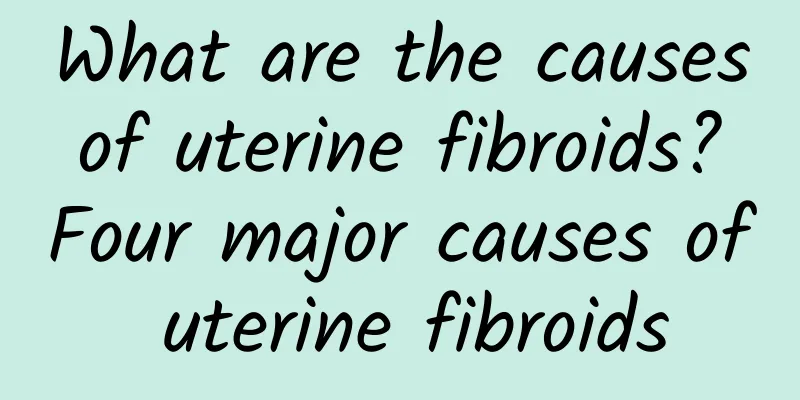Why does uterine fibroids grow during cesarean section?

|
Why does uterine fibroids grow after cesarean section? Caesarean section is a common way of delivery, but sometimes it can lead to the development of uterine fibroids. This has attracted people's attention and research on this phenomenon. In order to better understand this issue, this article will explore the reasons why uterine fibroids grow after cesarean section. 1. Effects of surgery on the uterus Caesarean section is a surgical delivery that affects the uterus. During the operation, the doctor needs to make an incision in the uterus and then take the fetus out. After the operation, the wound on the uterus needs to heal. However, sometimes the wound does not heal completely, resulting in a depression in the uterine wall. This depression may cause abnormal proliferation of the endometrium, which can lead to the formation of fibroids. 2. Hormonal changes After a cesarean section, a woman's hormone levels change. Before childbirth, hormone levels rise sharply, and after childbirth they drop rapidly. This change in hormone levels may have an adverse effect on the uterus and lead to the formation of uterine fibroids. 3. Uterine recovery after cesarean section Caesarean section is a surgery that causes great trauma to the uterus, and it takes a certain amount of time to recover after the operation. But sometimes the recovery process of the uterus is not smooth, or the recovery is relatively slow. This poor recovery may lead to the occurrence of uterine fibroids. On the one hand, poor uterine recovery may lead to endometrial hyperplasia, thereby promoting the growth of fibroids; on the other hand, poor recovery may also cause damage to the function of the uterus, making uterine fibroids more likely to occur. Through the above discussion, we can conclude that the main reasons for "why uterine fibroids grow after cesarean section" are the impact of surgery on the uterus, hormonal changes, and poor recovery of the uterus after cesarean section. Understanding these reasons is of great significance for the prevention and treatment of uterine fibroids. However, it should be noted that although cesarean section may lead to the formation of uterine fibroids, this does not happen to all women who have cesarean section. Therefore, when choosing a delivery method, you should make a decision based on your personal situation and the doctor's advice. Although cesarean section may cause uterine fibroids, being prepared for the arrival of the baby, paying attention to postpartum recovery and maintenance, and actively cooperating with the doctor's guidance can reduce the risk of uterine fibroids and protect the health of yourself and your baby. |
Recommend
Patients with cervical hypertrophy should understand its common examination methods
Nowadays, more and more women suffer from cervica...
Causes of recurrent trichomoniasis
Trichomonas vaginitis is a stubborn disease, beca...
Women must know what is cervical erosion degree 3? What are the symptoms of cervical erosion in women?
What are the symptoms of cervical erosion? The te...
How to treat bacterial vaginosis
Bacterial vaginitis can be treated with drugs suc...
Is back pain caused by pelvic inflammatory disease? Not necessarily
The occurrence of adverse symptoms such as low ba...
Introduction to effective clinical dietary care for vaginitis
Good dietary care for vaginitis is very important...
Drink porridge to nourish your stomach in winter! Millet and sweet potatoes increase satiety without causing fat
Drinking porridge in winter not only nourishes th...
What types of surgical treatments are there for ovarian cysts?
Although most ovarian cysts are benign, we still ...
Why is it itchy down there during pregnancy?
Women are often troubled by vulvar itching, and t...
Can uterine fibroids be cured?
Can uterine fibroids be cured? 1. Uterine fibroid...
Which hospital should I go to for treatment of hyperprolactinemia?
Which hospital should I go to for the treatment o...
What harm will irregular menstruation cause to women?
What are the dangers of irregular menstruation? I...
To get rid of obesity, you must first eliminate phlegm and dampness! Remember 7 key points to lose weight naturally
Although others are putting in the same effort an...
What does the cost of pelvic peritonitis examination mainly include?
It is very important to effectively understand th...
Will cervicitis develop into cervical cancer?
The public has two diametrically opposed misconce...









